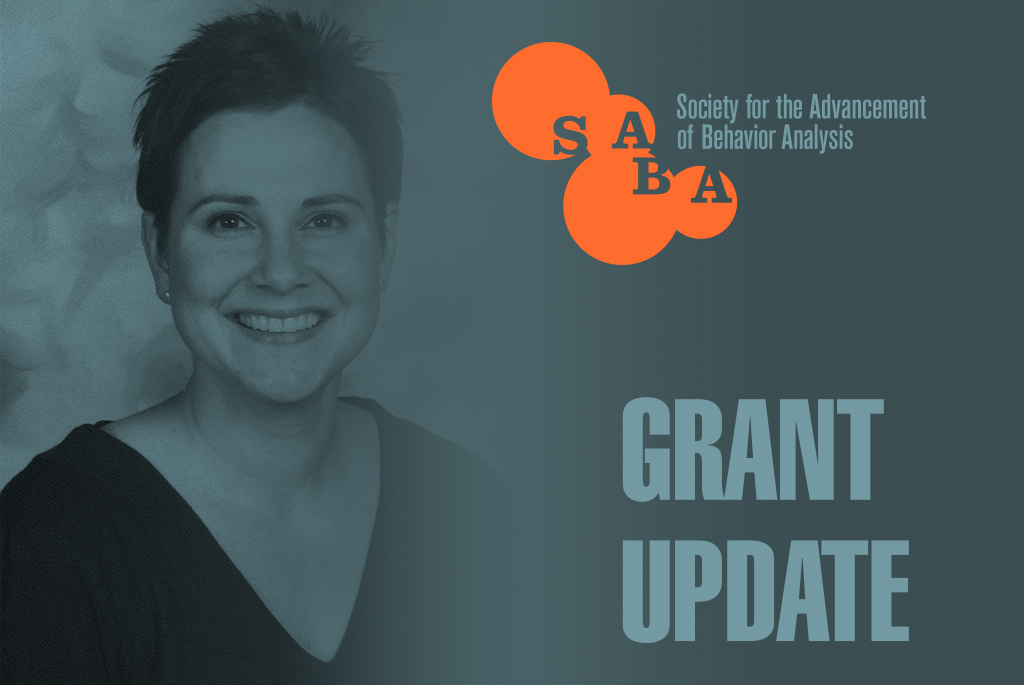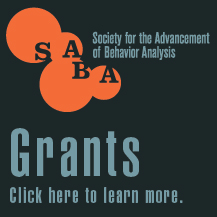Update: Training Intraverbal Bidirectional Naming to Establish Generalized Equivalence Class Performances

By Rebekah N. Lee, 2020 Sidney W. and Janet R. Bijou Grantee
Research Status
My research is a replication of the Jennings & Miguel (2017) study, Training Intraverbal Bidirectional Naming to Establish Generalized Equivalence Class Performances. The study was originally conducted with college students and my study is extending to younger age groups including high school, middle school, elementary school, and primary school ages.
Progress
After being awarded the grant, during the summer of 2020, I completed the IRB process with my college to run the study in-person. Following approval, due to COVID-19 regulations, I went back to IRB with an amendment to allow for a virtual format if necessary. I have been in contact with the first author, Jennings, and she was kind enough to share her experience with me about running her study. She also shared her picture stimuli and data collection forms, which were much appreciated.
During the fall semester of 2020, I worked on outlining and writing up methods, a protocol, and a script. I discussed with my research lab the pros and cons of using the same stimuli or changing based on the ages of my participants. I decided that for the older participants in middle and high school, I would keep the stimuli as it was in the original study. However; the original study utilized a computer program that was not commercially available to present the stimuli. I met with various researchers from my lab, my school cohort, and with professors to discuss creating my own program using platforms such as PowerPoint or Qualtrics. I decided that it would be the most pragmatic to use picture cards as the stimuli, given the lack of match-to-sample software commercially available and the level of involvement needed to write a program. At this point, I was considering that I needed to mimic the description of the original program which was self-advancing and automatically responded to the participant’s choices. At this early point in the decision process, I had not yet received the data forms from Jennings. I was recreating the study fully from the article and the outlined methods/procedures contained therein. Jennings supplied me with the data sheets and original stimuli pictures toward the end of the fall and I proceeded to begin the process of creating picture card stimuli.
During this spring semester of 2021, I have focused on narrowing down the procedures and the script, creating the stimuli, and running a pilot study with additional participants who are not involved in the main study. I needed to adjust the instructions for a younger group of participants and asked for help with this from volunteers in my research lab. We edited the original instructions twice before I was ready to run a pilot session. For pilot study work I had garnered volunteer participants in the age range of my current participants (middle and high school age). I began my pilot sessions with a high school student who is the son of a colleague (for which I obtained permissions and included in the participant reimbursement). Until this point, the process seemed conducive to running with physical stimuli in the form of picture cards, but when doing the procedures in real time it became clear that this was not the case. I had not realized, nor had Jennings or others in my lab, that the degree of match-to-sample work and following the pre-randomized arrangement would not be efficient with only one set of stimuli. In fact, it would have taken many more than two or three sets in order to maintain the pre-randomized arrangements. In order to maintain the pre-randomized sets and present the stimuli in an efficient manner, the stimuli would need to be put into a computer program. I have begun doing this in a PowerPoint, but as a compromise for keeping the programming simpler, I plan to advance the slides and produce the pictures manually as well as to take the data with pen and paper. I had hoped to have been running the study with the older grades by this point in time, but have had to post-pone until I am able to complete the stimuli in PowerPoint.
I anticipate that I will need to revise the stimuli for the Elementary and Primary grade levels as these ages range from K5 – 4th grade or five years-old to about nine years-old. It is possible that in the revision I will not need to run as many tests and subtests as the original study and could revert back to picture card stimuli. I am also planning to run separate stimuli for each of these two groups because of the differences with the younger ages relative to verbal behavior development. Because I have the materials to develop either, another option may be for me to give the participants a choice of which they would prefer following a sampling of non-study stimuli presented both ways.
Currently I have two high school students and eight middle school students who have completed, with their parents, all of the permission and assent forms necessary for participation. I have plans to begin running the study with these participants by May 1, 2021 or as soon as I have created the PowerPoint stimuli. I will then send out information for participant volunteers from the younger age groups and plan to run those in the fall of 2021 and complete the study by the end of December 2021.
Timeline
My proposed timeline was to have run the study by the end of May 2021 and be able to tentatively discuss the results. I am about 7 months off of this timeline.
Difficulties
I have outlined the difficulties earlier in my account. Mainly the need to amend the IRB to include virtual presentation if needed and the difficulty with generating stimuli, whether it should be physical cards or computer/iPad based etc.
Closing
I would like to thank the board for the opportunity to run this study with funding. Being able to offer participants an incentive for their efforts is wonderful! Also, I may have shied away from such a large and complicated study had I not received the grant funding. This has been such an exciting learning experience for me. Being awarded the grant has given me confidence as well as the monetary ability to do work in verbal behavior and learning development that I may not have felt able to pursue otherwise. I continue to be humbled and very grateful. Thank you.
Learn more about Rebekah Lee and her project.



